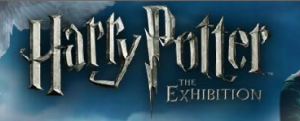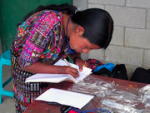Community Embraces New Word Game at Mid-Year Play Day This past Sunday, families at Takoma Park’s Seventh Annual Mid-Year Play Day had the opportunity to experience OtherWordly for the first time. Our educational language game drew curious children and parents to our table throughout the afternoon. Words in Space Several children gathered around our iPads […]
Read moreSearch Results for:
 In April 2009, a dozen 53-foot tractor trailers delivered the latest blockbuster exhibit — Harry Potter: The exhibition — to the Museum of Science and Industry in Chicago. The exhibit was big on magic, with 400 costumes and props from the films, including 17 wands, Harry’s famous round glasses, the Marauder’s Map, Harry’s Nimbus 2000 broom, Hermione Granger’s Yule Ball gown, and a lot of oversized furniture. The movie props were big draw. The exhibit was at the start of its tour, and the Chicago museum was the first venue. (more…)
In April 2009, a dozen 53-foot tractor trailers delivered the latest blockbuster exhibit — Harry Potter: The exhibition — to the Museum of Science and Industry in Chicago. The exhibit was big on magic, with 400 costumes and props from the films, including 17 wands, Harry’s famous round glasses, the Marauder’s Map, Harry’s Nimbus 2000 broom, Hermione Granger’s Yule Ball gown, and a lot of oversized furniture. The movie props were big draw. The exhibit was at the start of its tour, and the Chicago museum was the first venue. (more…)
 Tina Rosenberg wrote in a blog post for the NYTimes last week, about microconsignment, which is..
Tina Rosenberg wrote in a blog post for the NYTimes last week, about microconsignment, which is..
A way for village entrepreneurs to sell innovative and important products for which there is no established market — such as solar lamps, water purifiers, stoves and reading glasses — without having to take on debt. (more…)
 Do we need yet another online version of Economics 101? Why are universities putting courseware online, and what’s in it for students and schools? Inside Higher Ed’s post by Steve Kolowich, “Online Courseware’s Existential Moment,” discusses the world of open courseware, and what the next chapter may look like. He includes a short interview with Taylor Walsh, author of Unlocking the Gate, a new book about how universities are opening up access to courses. Here are some key points and excerpts from the article:
Do we need yet another online version of Economics 101? Why are universities putting courseware online, and what’s in it for students and schools? Inside Higher Ed’s post by Steve Kolowich, “Online Courseware’s Existential Moment,” discusses the world of open courseware, and what the next chapter may look like. He includes a short interview with Taylor Walsh, author of Unlocking the Gate, a new book about how universities are opening up access to courses. Here are some key points and excerpts from the article:
Work with us
February 2nd, 2011 by IDEA
Join our efforts to enhance scientific, artistic, and cultural literacy through breaking down the barriers between people and computers. We all have a stake in ensuring that technology fulfills its promise, and we welcome your support in identifying, developing, and sharing innovative approaches and technologies that lead to the exchange of meaningful information. There are
Sponsorship
January 31st, 2011 by IDEA
As a nonprofit organization, IDEA relies on generous contributions from individuals, foundations, corporations, and public agencies, all of whom donate money and time to support our theoretical and technological innovations for improving the ways people interact with online information. IDEA is now accepting the sponsorship of this web site, RSS feeds, and some of our
Browse articles
January 31st, 2011 by IDEA
Like museums in the physical world, WebExhibits presents information that is, for the most part, timeless. Yet WebExhibits also demonstrates a radical departure from physical museums, in terms of 24/7 accessibility, adaptation to support multiple learning styles, and cost-effectiveness. As of October 2010, 75% of U.S. households have high-speed Internet access, and virtually all students have Internet access at schools or libraries.
Virtual exhibits are cost effective. It costs only a few pennies to serve a WebExhibits visitor, in contrast with a typical U.S. museum’s cost of $23 per visitor.
If you share our passion for leveraging technology to increase scientific, artistic, and cultural literacy, then get involved! You can nurture bold ideas so that they grow and flourish. (more…)

